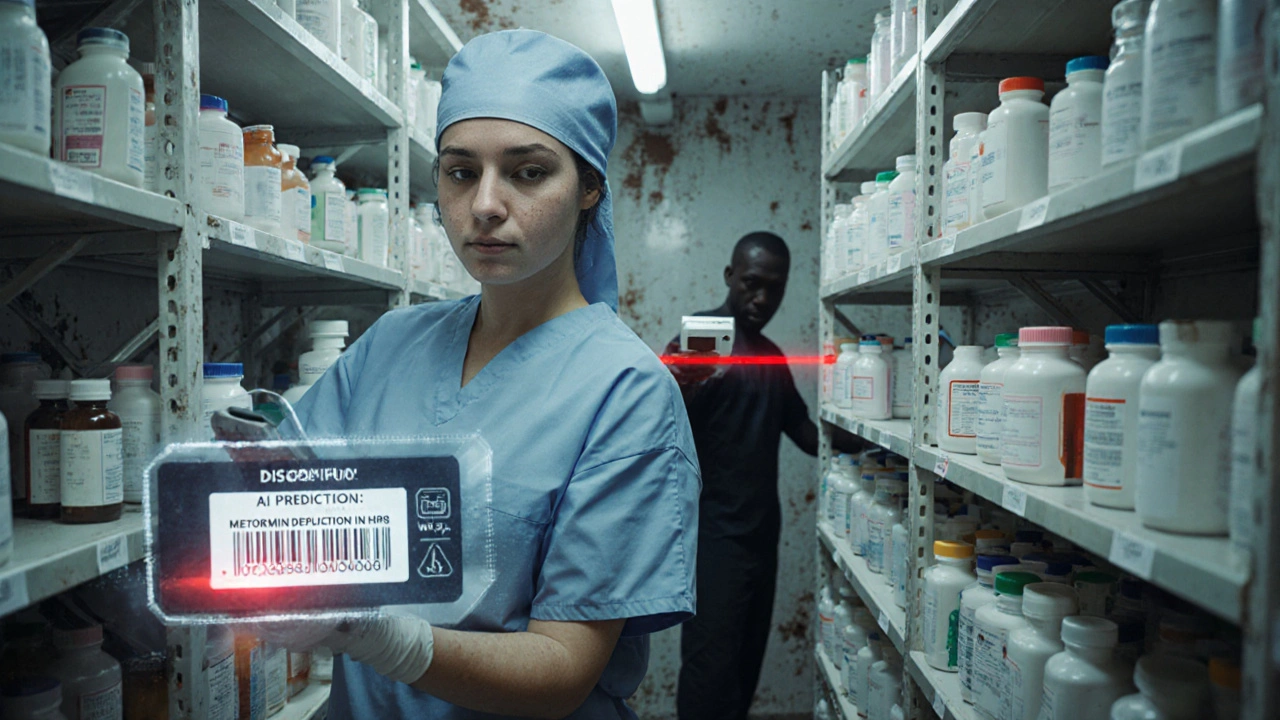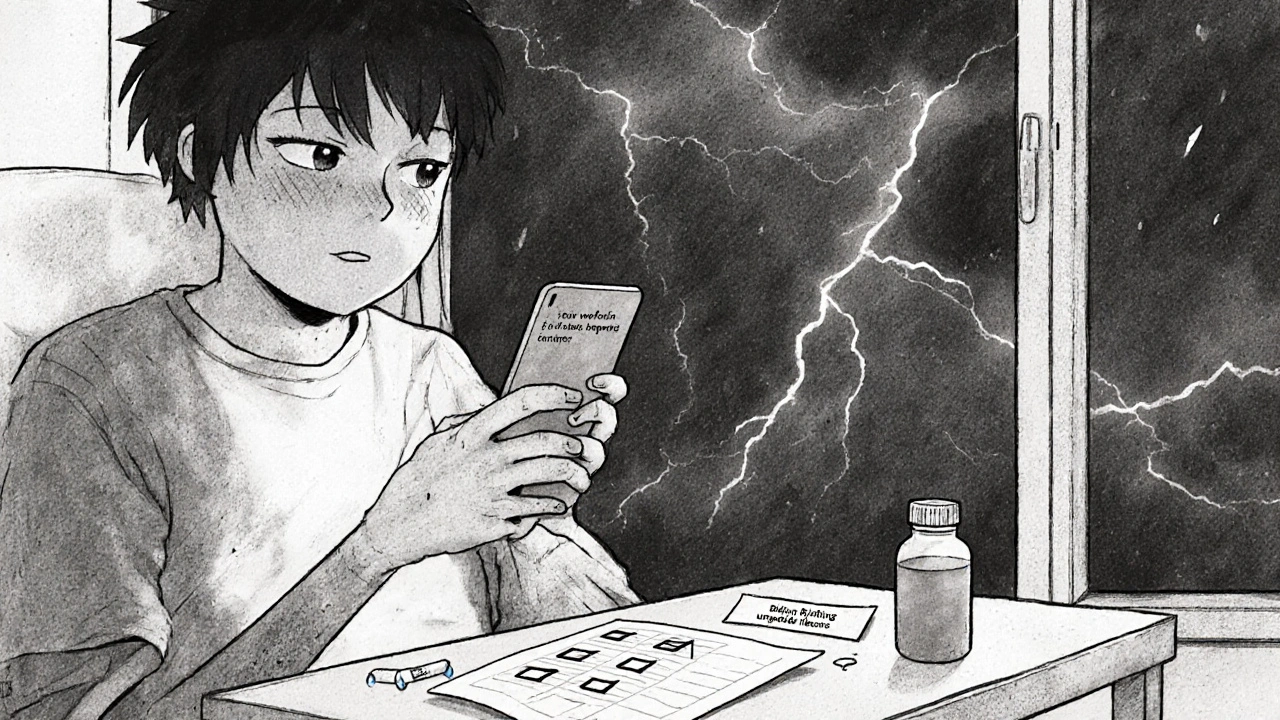Why Partial Fills and Back-Orders Cause Dispensing Errors
When a pharmacy can’t fulfill an entire order at once, things get messy. Maybe one medication is out of stock, or the dosage needs special approval. That’s when you get a partial fill - shipping what’s available now and promising the rest later. If you don’t handle it right, you risk giving a patient the wrong dose, missing a critical drug, or billing them twice. These aren’t just operational headaches. They’re patient safety risks.
According to a 2024 review by the Australian Pharmacy Guild, 17% of dispensing errors linked to inventory issues stem from poorly managed partial fills and back-orders. That’s not a small number. It means nearly one in six mistakes could be avoided with better systems.
Back-orders happen when demand outpaces supply. In pharmacies, this isn’t rare. A flu season spike, a drug recall, or a supplier delay can leave you short. NetSuite’s 2023 data shows 8-12% of retail orders face back-orders - but in specialty pharmacy, it’s closer to 25%. If you’re filling prescriptions for rare medications, chronic condition drugs, or compounded formulas, you’re likely dealing with this daily.
Set Clear Back-Order Policies - No Guesswork
Every pharmacy needs a written back-order policy. Not a vague note on a whiteboard. A real, documented rule that everyone follows. There are four main approaches, and choosing the right one matters.
- Ship-as-available: Send what’s in stock now. The rest comes later. Best for non-critical meds like vitamins or long-term maintenance drugs.
- All-or-nothing: Don’t ship anything until the full order is ready. Use this for combination therapies or drugs that must be taken together - like HIV regimens or chemotherapy kits.
- Up-to-X shipments: Allow only 2 or 3 partial shipments before pausing. Prevents endless delays and keeps patients from waiting months.
- Default policy: Set one standard rule, then override only when needed. Keeps things simple.
For example, if a patient needs lisinopril and hydrochlorothiazide together for hypertension, don’t ship just the lisinopril. They might take it without the diuretic and risk complications. That’s when all-or-nothing saves lives.
Real-Time Inventory Tracking Is Non-Negotiable
If your inventory system updates once a day, you’re flying blind. A patient walks in for a script for metformin. You say it’s in stock. Five minutes later, another pharmacy down the street pulls the last bottle. Now you’ve promised something you can’t deliver. That’s how errors start.
Systems need to update inventory within 5-10 seconds of a dispense or restock. That’s the standard Fabric Inc set for reliable fulfillment. If your pharmacy software doesn’t do this, it’s outdated. Look for platforms that sync with your point-of-sale, e-prescribing tools, and supplier portals in real time.
Also, use FIFO - first-in, first-out. This isn’t just for food. It’s critical for meds. Older stock expires first. If you’re pulling newer bottles off the shelf while older ones sit, you’re risking expired drugs being dispensed. FIDELITONE’s Dave Butterly confirmed in April 2024 that FIFO cuts back-order processing time by 90% because incoming stock can be shipped the same day it arrives - no need to wait for put-away.
Bill Only What’s Shipped - No Guessing
One of the most common billing errors in partial fills? Charging the patient for the whole order upfront. That’s wrong. And it’s illegal in some places. California’s SB-1287, effective January 1, 2025, requires clear disclosure of fulfillment timing. If you charge before delivery, you’re violating that rule.
Here’s how to do it right:
- Generate a separate invoice for each shipment.
- Link each invoice back to the original order number.
- Prorate shipping costs based on weight and item value - not split evenly.
- Only charge for items that have actually left your pharmacy.
eFulfillmentService found that pharmacies using this method saw a 28% boost in customer trust. Why? Patients know exactly what they’re paying for. No surprises. No disputes. No complaints to the health ombudsman.

Communicate Early, Often, and Clearly
Patients hate waiting. But they hate being left in the dark more.
When a back-order happens, don’t wait for them to call. Send an automated message - via SMS, email, or patient portal - within 2 hours of the order being flagged. Include:
- Which item(s) are delayed
- Expected restock date
- Options: wait, substitute, cancel
- Estimated delay (no vague "soon" - use days)
NetSuite recommends a hard 30-day limit. If you can’t get the drug in 30 days, notify the patient. Offer a refund or alternative. BetterCommerce.io’s data shows this reduces customer frustration by 39%.
And here’s a pro tip: let patients choose their communication method. Some prefer text. Others want portal updates. Give them control. It builds loyalty.
Use Tiered Back-Order Rules for Different Drugs
Not all medications are the same. Treat them that way.
Divide your inventory into three tiers:
- Tier 1: High-risk or custom meds - like insulin pens, compounded creams, or controlled substances. These need manual approval before back-ordering. No auto-approval.
- Tier 2: Standard chronic meds - metformin, atorvastatin, levothyroxine. These can auto-backorder. Set a 7-day hold before notifying the patient.
- Tier 3: Discontinued or obsolete drugs - if it’s been pulled from the market or replaced, don’t back-order it at all. Flag it in your system to block the order entirely.
This cuts down on errors by 44%, according to a 2024 Capterra analysis of pharmacy software users. The biggest complaint in negative reviews? Systems that don’t track which items were shipped in partial orders. Tiering fixes that.
Train Staff and Run Weekly Audits
Technology helps, but people make the difference. Staff need training - not a one-hour webinar. At least 2-3 weeks of hands-on practice with your system.
Focus on these skills:
- How to flag a back-order in the system
- How to generate split invoices
- When to override the default policy
- How to update patient records after a partial fill
Also, run weekly audits. Pick 20 random partial fills from the past week. Check:
- Was the correct item shipped?
- Was the patient notified?
- Was the invoice accurate?
- Was the inventory updated?
Target 98%+ accuracy. If you’re below that, retrain. This isn’t optional. It’s compliance.

Use AI to Predict and Prevent Back-Orders
You don’t have to wait for stock to run out. AI can tell you when it’s about to.
NetSuite’s March 2024 update introduced AI-powered forecasting that reduces unexpected back-orders by 41%. It looks at historical demand, seasonal trends, prescription volume, and even weather patterns (flu season spikes, for example).
Some systems now suggest substitutes automatically. If your patient’s usual brand of omeprazole is out, the system might suggest a generic or a different PPI - and notify the prescriber for approval. That boosts order completion by 22%.
Even if you don’t have AI yet, start tracking trends manually. Which drugs run out every Tuesday? Which ones get back-ordered after holidays? Write it down. That’s the first step to automation.
What Happens When You Get It Wrong
Bad back-order handling doesn’t just cost money. It costs trust.
On Reddit, a pharmacist in Melbourne shared: "We had a patient on warfarin. We shipped the INR test kit but not the blood thinner. She took the test, saw her levels were high, and didn’t know why. She went to the ER. We got a complaint. The regulator called. We lost our accreditation for 30 days."
That’s not hypothetical. It’s real. And it’s preventable.
Studies show pharmacies with strong back-order systems have 27% fewer customer service calls and 18% higher order completion rates. They also see 15-20% higher patient retention during supply chain crises.
On the flip side, poor handling leads to 3-5x more cancellations when things go wrong. And in pharmacy, cancellations mean patients go without meds. That’s dangerous.
Final Checklist: Your Back-Order Safety Net
Before you close your shift, run through this:
- ☑ All partial fills have been logged with exact item and quantity
- ☑ Separate invoices generated and linked to original order
- ☑ Patient notified with clear ETA and options
- ☑ Inventory updated in real time
- ☑ Tier 1 drugs manually reviewed before back-ordering
- ☑ No Tier 3 drugs are being back-ordered
- ☑ No billing for unshipped items
If you check all these, you’re not just avoiding errors. You’re building a pharmacy patients trust to be reliable - even when things go wrong.






David vaughan
November 21, 2025 at 20:08
This is so spot-on... I've seen so many pharmacies mess this up. Seriously, the billing thing? I can't believe it's still an issue. I mean, charging for stuff that hasn't even left the building?? That's just... wrong. And the real-time inventory? If you're not doing that, you're basically gambling with people's lives. I'm not even kidding. I've had to call my own pharmacy twice because they 'thought' they had my med. They didn't. I almost had a panic attack. Please, please, please implement this. I'm begging you.